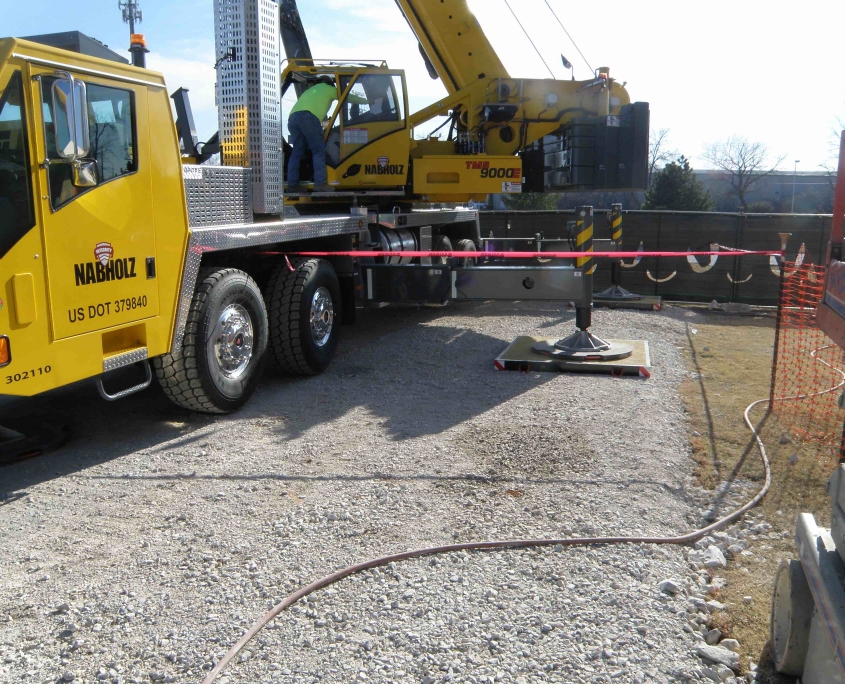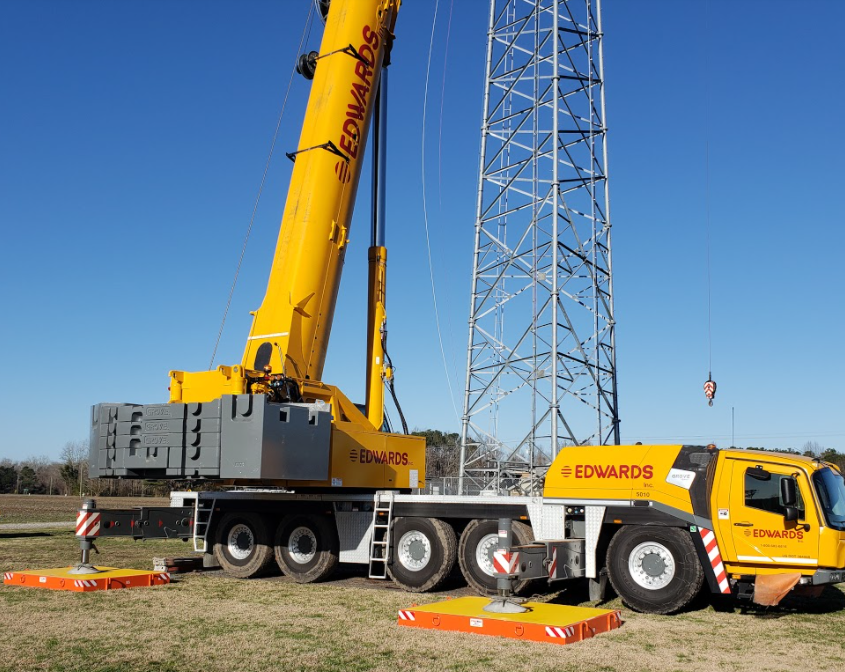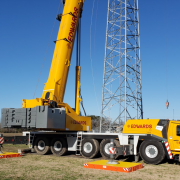Understanding and Respecting the Ground We Set Up On
Safe crane operations are contingent on understanding and having respect for the ground you are setting up on. Most lift planners and lift directors are not geotechnical engineers, but they do need to understand the basics of soil classification.

Nabholz Construction improved their ground on this site by adding a layer of crushed rock, and topped with DICA crane pads and outrigger pads.
An article published by Pile Buck provides straightforward definitions of the common types of soil and their characteristics. According to the article, OSHA classifies soil as Type A, Type B, or Type C. Type A has high compressive strength, while Type C is very unstable.
In crane terms, the softer the ground, the larger the matting or pad area needs to be to spread the load and safely reduce ground bearing pressures to levels the ground can support.

In crane terms, the softer the ground, the larger the matting or pad area needs to be to spread the load and safely reduce ground bearing pressures to levels the ground can support.
The Crane Industry Council of Australia in its Guidance Note on Crane Stability and Ground Pressure explains that “crane stability often depends on the integrity of the ground.” In fact, CICA recommends that the ground condition be inspected by a geotechnical engineer. “Crane lift study results should be provided to the geotechnical engineer and a geotechnical report should be issued by the geotechnical engineer with instruction of the suitability of the ground at the time of the lifting activity conducted.” OSHA 1926.1402 gives this responsibility to the controlling entity of the project. DICA outlines this and other regulations related to ground conditions and crane setup in the resources section of our website.
CICA’s report calls for the bearing capacity of the ground to be identified, including surface conditions and below surface conditions. “The ground can have weak layers below the surface and these underlying layers of weak or soft ground can possibly lead to a collapse.” This is where the Unified Soil Classification System (USCS) and the Modified Unified System (MUD), described in the Pile Buck article, comes into play, which may be referenced in reports by geotechnical engineers. In particular, the MUD System is “intended to provide the best description of the soil sample to those involved in the planning, design, construction, and maintenance processes.”
In addition to the ground’s bearing capacity, the other critical pieces of information for crane operations are the outrigger reaction force and the allowable ground bearing pressure.
The outrigger reaction force is the loading exerted through the outrigger onto the supporting surface. This information can be obtained from the crane manufacturer’s software, or by using third party lift planning software such as 3D Lift Plan. The outrigger load is not the load being picked or the crane capacity. The outrigger load is specific to the amount of force applied to any one of the outriggers during set-up, operations and tear down of the equipment. When choosing a mat or pad solution, the rated capacity of the product should always exceed the maximum outrigger reaction force of the equipment.
The allowable ground bearing pressure is based on the ground conditions, and is the site owner’s responsibility. Typically expressed in pounds per square inch (psi) or pounds per square foot (psf), the allowable ground bearing pressure is the maximum pressure allowed on the site. Allowable ground bearing pressures have become a point of contention in recent times. We have seen situations where site owners tend to be overly cautious and demand extremely low ground bearing pressures without the correct knowledge and information. The result is a demand for matting and pads of extreme areas that drive up costs and do little to improve safety.
According to CICA, if the ground does not meet the needed ground bearing pressure, additional measures that can be taken include reducing the imposed loads, repositioning the crane, reducing the load weight, increasing the size of the crane pads, or performing soil stabilization tactics.
Ultimately, respect for the ground takes an accurate assessment of its condition and good communication between all parties regarding the crane’s set-up requirements. DICA encourages crane owners to manage their risk by proactively including a required minimum Ground Bearing Capacity in communications with the controlling entity early in the lift planning process. Taking this step can significantly improve pre-lift planning and discussions, improve overall safety and reduce everyone’s risk.



